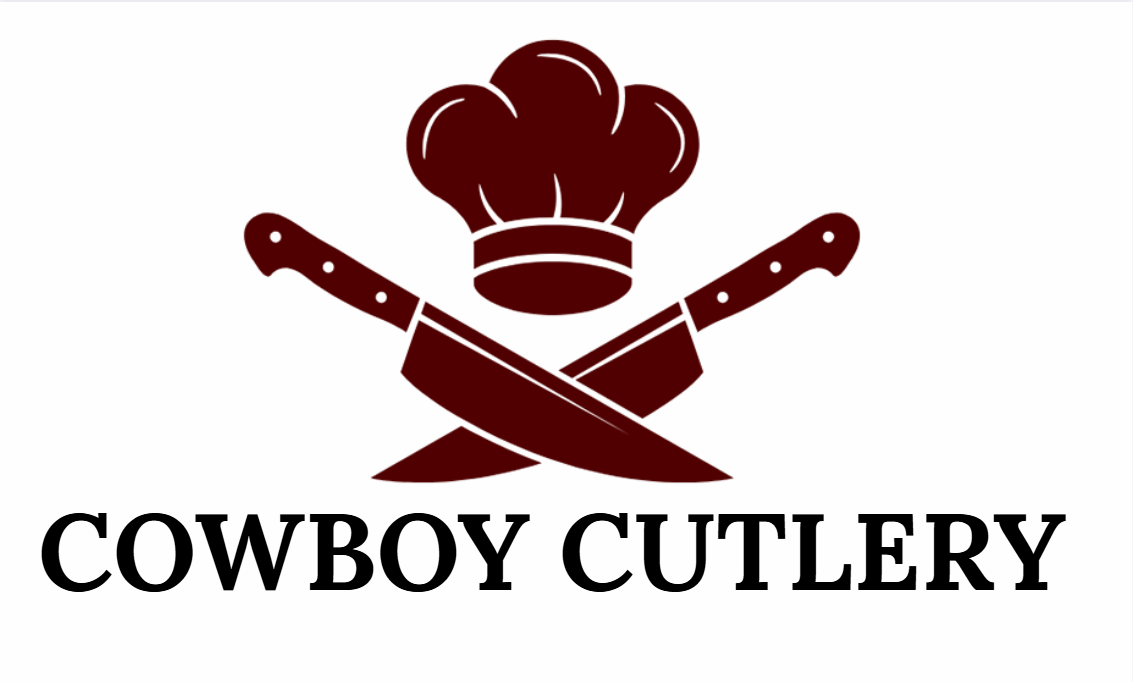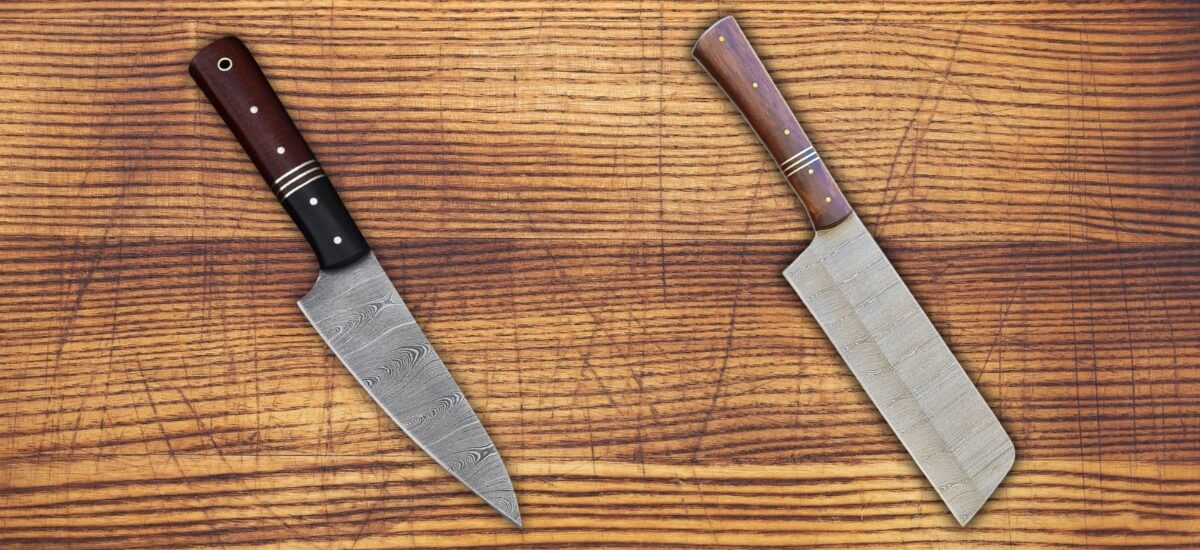Two prominent types of chef knives exist in the market: Japanese and German models. The culinary world recognizes these two knife varieties because they deliver excellent performance and exceptional craftsmanship. Selecting the best chef knife for your kitchen demands assessment between Japanese and German options. This article will compare Japanese and German chef knives through an examination of their individual characteristics for kitchen users concerned with such distinctions.
The Craftsmanship: Tradition and Innovation
Although Japanese chef knives originate from traditional Japanese craftsmanship and German knives stem from German traditions, the knife manufacturing processes divide sharply between these two culinary tools.
The production of exceptional knives in Japan extends through many centuries of manufacturing excellence. Hand-forged Japanese knives require specialized expertise for their production because the process demands rigorous skill and complete attention to the details. Japanese blacksmiths utilize the san-mai technique for making their blades through multiple steel layers folded into a single piece which becomes strong while staying sharp. By executing this particular technique, blades become extremely sharp while offering outstanding operational characteristics. Sharper edges produced by Japanese knives become possible because their steel material outpaces German steel in terms of hardness.
The chief knives produced in Germany stand out because of their strong construction and longevity. Through their specific forging method, German manufacturers produce knives which feature thick and strong blades. German knives are built from high-carbon stainless steel because this material provides users with both efficient cutting ability along with structural integrity. German knives excel at performing
durable tasks thus they become an optimal daily utensil for kitchens.
Blade Design: Shape and Function
The two designs begin to separate when we look at blade construction.
Japanese culinary blades distinguish themselves by using thin blades which remain light in weight. They serve perfect functionality in delicate food preparation because of their thin structure which enables smooth cutting of fish, vegetables, and herbs. The Japanese chef knives Santoku and Gyuto feature flat blades that enable smooth cutting like rocks. The knife’s thin blade produces absolute razor-sharp edges that make it suitable for precise cutting needs that demand low resistance.
The distinctive feature of German knives lies in their substantial wider blades when compared to other knife types. The broad curve on the blade enables users to rock and chop thicker or larger items during cooking. Utilizing its thicker build and stable structure, the German chef knife becomes suitable for powerful chopping duties such as breaking large meat pieces and cutting through bones. The extra weight on the blade gives better control that is particularly valuable for newcomers.
The Balance Combined with Weight of This Tool Provides Comfort When You Grip It
The relationship between mass and equilibrium of a knife significantly influences its natural hand comfort.
Japanese chef knives remain easily maneuverable because of their lightweight design. These knives are suitable for professional chefs since their precise performance needs combined with their agile blade response. Japanese knife designs normally distribute weight to the blade section so it feels heavier than the handle, enabling users to perform exact and specific slices.
German chef knives usually come with superior weight and dimensional mass. A German knife features balanced handle and blade weights which create equal distribution of mass. German chef knives become simpler to handle for intense cutting duties including hard vegetables and meats. Additional knife weight acts as a helper to manage better control while working on repeated operations.
Durability: Long-Lasting Performance
Knife durability stands as an essential consideration which people need to consider before purchase. The selection of a knife depends on how well it will sustain over an extended duration.
Japanese knives possess superior sharpness from their high-carbon steel construction but remain susceptible to rust along with damage because improper maintenance creates an issue. All Japanese knives require proper maintenance through immediate washing followed by thorough drying and occasional blade honing. Japanese knives function best for culinary professionals who are ready to manage continuous maintenance of their blades.
Stainless steel used in German knives produces durable knives which resist rust and staining to maintain their appearance easily. German knives offer greater flexibility when it comes to upkeep since they do not maintain their edge as long as their Japanese counterparts but remain less sensitive in maintenance requirements. German knives possess strength to endure regular usage without suffering damage either as chips or fractures under normal stress.
Sharpness and Edge Retention: Cutting Precision
Your knife selection requires assessment of both sharpness performance and its ability to keep its edge.
Japanese knives establish their reputation through their outstanding sharpness features. These knives maintain their razor-sharp edge due to steel hardness which extends their usable period. A Japanese knife requires infrequent sharpening because its blade edge is easily restored through minimal effort. The knife’s thin blade design enables smooth slicing of food with minimal effort because of its perfect design for fine cutting tasks.
German chef knives provide outstanding all-purpose performance thanks to their edge retention regardless of their being slightly less sharp than Japanese knives upon purchase. German knife producers use dense steel blades that preserve their cutting edge even when used extensively and subject to normal wear and tear. Regular sharpening sessions will become necessary to ensure peak performance for the knife.
Price: Investing in Quality
A major variation exists in knife prices between Japanese knives and their counterparts made in Germany.
The cost of Japanese kitchen knives increases since they require high-quality materials and careful crafting practices during manufacturing. Japanese chef knives should be purchased by those who want knives that deliver top-notch sharpness and specialized cutting performance for delicate tasks.
The cost of German knives remains affordable even though their performance level and durability match those of premium knives. A German chef knife offers excellent durability with a reasonable price point, thereby making it an excellent choice for everyday use.
Which One Should You Choose?
Your cooking style and personal taste decide which knife between Japanese and German approaches will suit best.
A Japanese chef knife stands out for its precision and sharpness along with its need for maintenance commitment, so you should consider getting one if those attributes appeal to you. Such a knife has a design suited for exacting cut tasks involving fish or vegetable preparation because it remains light in weight and maintains a thin sharp point.
A German chef knife is typically the best selection for people who need a flexible all-purpose blade together with minimal maintenance requirements. Its big and strong design together with its heavy construction gives it an outstanding performance for different types of food preparation.
Chef knives of superior quality are featured at Cowboy Cutlery to fulfill kitchen requirements. We assist customers in selecting the ideal Japanese or German knife among our available options at Cowboy Cutlery.


